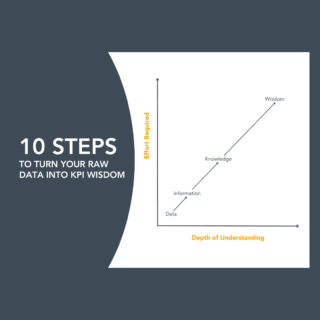How do you feel when you hear the word ‘target’ at work? Angry? Nervous? Fearful? Excited? Motivated? Competitive? That’s the funny thing about performance targets: we often have an emotional response to them, based on whether or not we believe we can meet them. Are these emotional responses healthy?
Anxiety, fear and anger towards targets come from expectations and from ‘shoulds’: Our unit should be more profitable; customers should be recommending us; our products should be more reliable. These emotions are the same ones we feel when a loved one criticizes us. The loved one says we ‘should’ be behaving in a different way from how we are currently behaving, and we feel bad for not measuring up.
When performance targets have the energy of ‘should’, our attention can easily fixate on the urgency to close the gap between as-is performance and should-be performance. We become attached to the number and our typical reactions to urgency kick in. We push harder, we rush to implement actions, and when we don’t get the expected results, we make excuses and blame others.
This energy of ‘should’ can start with the leaders who set the targets; but just as easily, this energy can come from within our own minds.
To avoid these unhealthy emotional mindsets around performance measurement, try these 3 shifts so we can make space for our teams to be creative and resilient in the face of change.
Shift #1: Set performance targets as intentions rather than expectations.
We set targets because we’re measuring something important to our organization and we want it to improve.
For example, it takes our department too long (75 days on average) to resolve our internal customers’ supply problems. The target is set at an average time of 10 days.
- If we set the performance target as an expectation, our team may rush to make next month’s measure look good. This rush and stress may make them cut corners, take focus off doing the job well, and increase burn out.
- If we set the performance target as an intention, we would encourage our team to remember why it matters that we reduce the time to resolve supply problems. We remind them it’s because we care about our internal customers and want to solve their problems more quickly so they can do their jobs better. This, in turn, will make our external customers more satisfied. It’s not a numbers game. We have to remember that rushing and cutting corners will only make our customers, and us, less happy.
So, before setting targets, revisit the intention of why we want to improve the performance in the first place. This approach will get more team buy-in and reduce negative emotions because the energy to pursue the target comes from inside of us and isn’t imposed on us from the outside.
Shift #2: Pursue the performance target rather than hitting it
Hitting a target is all about numbers, a game we play every month to see if performance (and thereby our team) is good or not. Pursuing a target is about exploring what we can change or adapt so we can move closer to an elevated level of performance. The emotion we want to drive is curiosity: curiosity to discover the causes holding performance back and curiosity to invent elegant solutions to remove those causes once and for all.
Continuing with our earlier example, when pursuing the target, our team could examine the process of resolving supply problems, and find ways to make the process simpler and quicker. They might ask different questions of the internal customer for a better problem diagnosis. They might collaborate to share solutions with each other, or they might do away with red tape and unnecessary approvals.
So rather than attaching our own self-worth to instantly hitting should-be targets, we can, instead, practice a continuous improvement mindset to finding the easiest ways to elevate could-be performance.
Shift #3: Meeting performance targets gradually rather than instantly
Performance targets don’t have to be suddenly met. In fact, they often can’t be.
- An athlete isn’t suddenly going to take 5 minutes off her best 10 km race time just because the coach sets the target. The athlete needs time to improve her capability in order to perform at the new level. Targets need to come with timeframes, and the timeframe needs to respect the amount of inertia an existing process has, and what it will take to make it more capable.
- Our example team, trying to reduce the time to resolve supply problems could monitor the impact of their process changes and, over the course of several months, see if the overall level of performance is getting better. They would learn what works and what doesn’t work, and successful changes would mean they never have to push or rush to hit a target again: they build the capability into their process – for the long term.
The best performance targets (and probably the ones that are achieved the fastest) are those that evoke our curiosity and energy for could-be performance. If targets are all about should-be, they won’t likely tap into the very creativity and root cause thinking required to reach them.
As Einstein said:
“We cannot solve our problems with the same thinking we used to create them.”
What’s your experience?
What’s the energy of performance targets in your organization or business? Do targets evoke a healthy response from your colleagues or employees or do targets shut them down, and sabotage their ability to elevate performance?
The PuMP® Performance Measure Blueprint was created by Australia’s performance measure specialist Stacey Barr. Louise Watson of Adura Strategy is Canada’s Official Partner and Licensed PuMP® Blueprint consultant.



